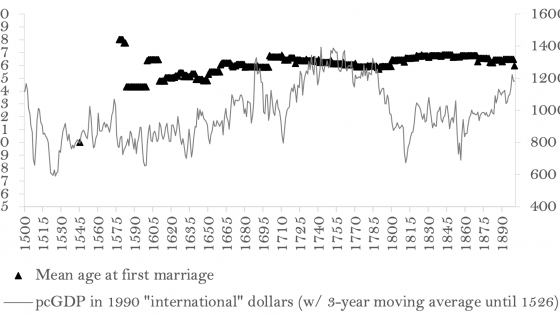DP17475 How did the European Marriage Pattern Persist? Social versus Familial Inheritance: England and Quebec, 1650-1850
Eric Turkheimer famously stated as a Law, "All human behavioral traits are heritable." But this poses a puzzle for pre-industrial demographic
systems, such as the European Marriage Pattern, where individuals made behavioral choices that limited fertility. Why were these behaviors not replaced over time with those that generated higher fertility? Some have argued the solution to this puzzle is that limited fertility in the first generation was actually maximal fertility in subsequent generations. But we show that there was no fertility penalty to future generations from higher fertility in the initial generation in both England and Quebec. Here we argue instead that the European Marriage Pattern survived for more than 500 years because, for pre-industrial fertility behavior, Turkheimer's Law does not hold. Even though at the social level fertility limiting behaviors transmitted strongly, there was scant familial inheritance of fertility choices. So fertility enhancing deviations did not get transmitted within families across generations, and the European Marriage Pattern could persist indefinitely. In the paper we show evidence consistent with horizontal as opposed to vertical transmission of fertility behaviors.

